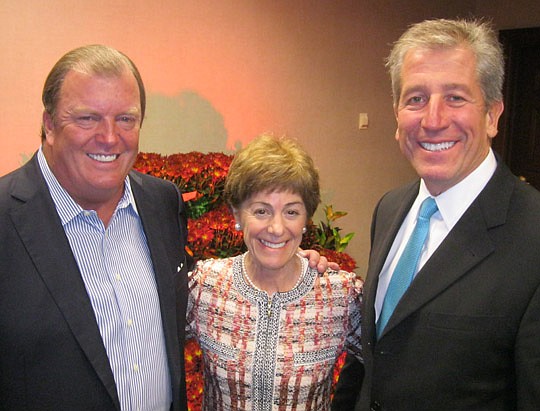Special Offer: $5 for 2 Months!
Your free article limit has been reached this month.
Subscribe now for unlimited digital access to our award-winning business news.

In the nearly five years since Winn-Dixie Stores Inc. has been out of Chapter 11 bankruptcy reorganization, customer surveys indicate the company’s supermarkets have gone from “poor to solid.”
Now Winn-Dixie’s goal is to lift customer ratings from “solid all the way to best in the country,” according to a video shown to shareholders at the company’s annual meeting Wednesday.
In order to do that, Winn-Dixie has started a program with its employees called the “WINN-ing Way.”
“The Winn-ing Way represents a change in attitude and a shift in culture,” Chairman and CEO Peter Lynch told shareholders gathered at Winn-Dixie’s Jacksonville headquarters.
“A lot of it’s about in-store execution and taking very good care of our guests,” Lynch said in an interview after the meeting.
According to a brochure distributed to employees, the goals of the new strategy include making life “easier and fun” for customers and for the stores to become an important part of their neighborhoods.
Lynch said Winn-Dixie held a series of town hall meetings with employees, beginning in July, to introduce the new program.
“It’s been very well accepted by all our team members,” he said.
The video presented to shareholders was frank in pointing out how Winn-Dixie’s image with customers had suffered before it entered Chapter 11 in 2005.
“Our stores aged and we lost focus on what made us great in the first place,” it said.
While some people thought Winn-Dixie would not be able to recover after emerging from bankruptcy in 2006, the company “is proving the skeptics wrong,” the video said.
After the meeting, Lynch wouldn’t put a timetable on the company’s goal to become the “best in the country” supermarket chain.
“I want to see solid progress made every single year,” he said.
During the meeting, Lynch told shareholders: “I am very excited about the progress we’ve made as a company.”
In addition to strong sales results from Winn-Dixie’s “transformational” store remodel program, which includes more attractive store designs and more fresh food offerings, Lynch cited three areas of improvement in fiscal 2011:
• The continued rollout of its “fuelperks!” reward program, in which customers earn gasoline discounts. That program is now in 80 percent of Winn-Dixie’s 483 stores.
• A computer-generated ordering system that is improving store performance.
• New marketing and merchandising strategies, such as its “make-a-meal” solutions.
One shareholder at the meeting asked Lynch and the board of directors to consider one new strategy.
James East of ACI Partners Fund, which owns about 100,000 Winn-Dixie shares, said the company should consider cutting back on capital expenditures to remodel stores and instead use the money for share buyback programs, to increase the value of the stock.
Lynch said the board would consider his input.
One analyst last week also questioned the benefits of its remodel spending. Winn-Dixie so far has completed only five transformation remodels, with plans for 15 more in the current fiscal year.
“While the transformational investments appear to be successfully driving significant top-line growth, the remodels are costly (at $5 million per store) and time-consuming,” BMO Capital Markets analyst Karen Short said in a research report after Winn-Dixie’s quarterly earnings report last week.
“As a result, at the current pace, and with $552 million in liquidity, the company will only be able to remodel 25 percent of the store base over a multiyear period, and we are not convinced such a small sample size will be sufficient to meaningfully improve EBITDA (earnings before interest, taxes, depreciation and amortization),” Short said.
mbasch@baileypub.com
356-2466
Your free article limit has been reached this month.
Subscribe now for unlimited digital access to our award-winning business news.